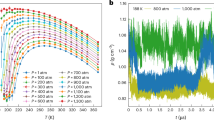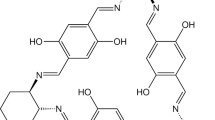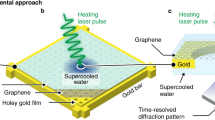Abstract
THE viscosity of water has been determined down to -9° C., at which temperature it is quite fluid, and I was surprised to find that water drops suddenly chilled (without crystallisation) to -17° became hard—that is, true water glass. In Beilby's “Aggregation and Flow of Solids” (1921), p. 195, we find: “When a small drop of water was placed on a glass slip which had previously been cooled to -12° it instantly froze and became like a hemispherical lens, perfectly transparent and colourless. Under the microscope it showed no signs of crystalline structure.…” The term ‘froze’ is a little ambiguous, but from the context can only be taken to indicate hardening.
This is a preview of subscription content, access via your institution
Access options
Subscribe to this journal
Receive 51 print issues and online access
$199.00 per year
only $3.90 per issue
Buy this article
- Purchase on SpringerLink
- Instant access to full article PDF
Prices may be subject to local taxes which are calculated during checkout
Similar content being viewed by others
Author information
Authors and Affiliations
Rights and permissions
About this article
Cite this article
HAWKES, L. Super-cooled Water. Nature 123, 244 (1929). https://doi.org/10.1038/123244e0
Issue date:
DOI: https://doi.org/10.1038/123244e0



